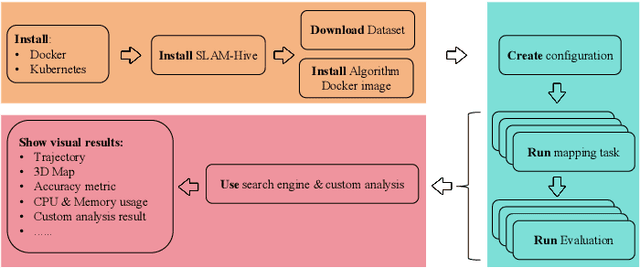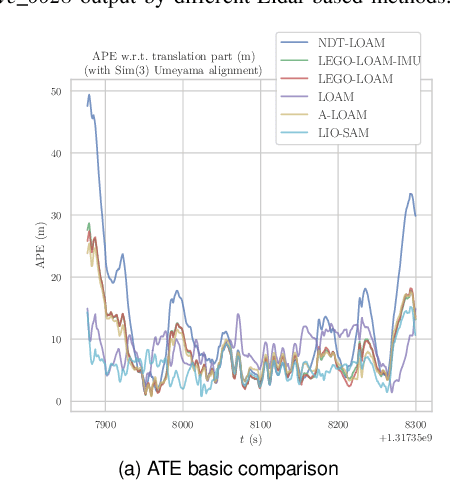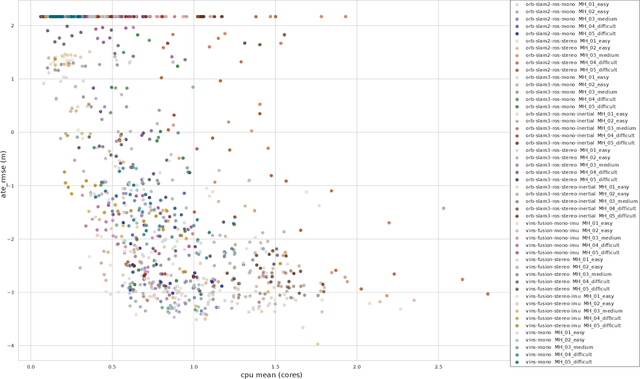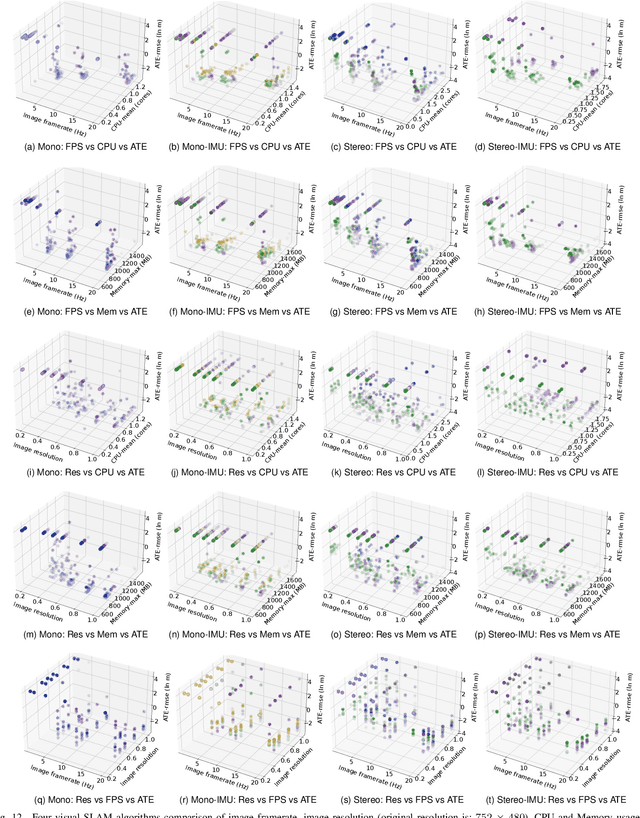Bowen Xu
GLM-4.5: Agentic, Reasoning, and Coding (ARC) Foundation Models
Aug 08, 2025Abstract:We present GLM-4.5, an open-source Mixture-of-Experts (MoE) large language model with 355B total parameters and 32B activated parameters, featuring a hybrid reasoning method that supports both thinking and direct response modes. Through multi-stage training on 23T tokens and comprehensive post-training with expert model iteration and reinforcement learning, GLM-4.5 achieves strong performance across agentic, reasoning, and coding (ARC) tasks, scoring 70.1% on TAU-Bench, 91.0% on AIME 24, and 64.2% on SWE-bench Verified. With much fewer parameters than several competitors, GLM-4.5 ranks 3rd overall among all evaluated models and 2nd on agentic benchmarks. We release both GLM-4.5 (355B parameters) and a compact version, GLM-4.5-Air (106B parameters), to advance research in reasoning and agentic AI systems. Code, models, and more information are available at https://github.com/zai-org/GLM-4.5.
La RoSA: Enhancing LLM Efficiency via Layerwise Rotated Sparse Activation
Jul 02, 2025Abstract:Activation sparsity can reduce the computational overhead and memory transfers during the forward pass of Large Language Model (LLM) inference. Existing methods face limitations, either demanding time-consuming recovery training that hinders real-world adoption, or relying on empirical magnitude-based pruning, which causes fluctuating sparsity and unstable inference speed-up. This paper introduces LaRoSA (Layerwise Rotated Sparse Activation), a novel method for activation sparsification designed to improve LLM efficiency without requiring additional training or magnitude-based pruning. We leverage layerwise orthogonal rotations to transform input activations into rotated forms that are more suitable for sparsification. By employing a Top-K selection approach within the rotated activations, we achieve consistent model-level sparsity and reliable wall-clock time speed-up. LaRoSA is effective across various sizes and types of LLMs, demonstrating minimal performance degradation and robust inference acceleration. Specifically, for LLaMA2-7B at 40% sparsity, LaRoSA achieves a mere 0.17 perplexity gap with a consistent 1.30x wall-clock time speed-up, and reduces the accuracy gap in zero-shot tasks compared to the dense model to just 0.54%, while surpassing TEAL by 1.77% and CATS by 17.14%.
HEPP: Hyper-efficient Perception and Planning for High-speed Obstacle Avoidance of UAVs
May 23, 2025Abstract:High-speed obstacle avoidance of uncrewed aerial vehicles (UAVs) in cluttered environments is a significant challenge. Existing UAV planning and obstacle avoidance systems can only fly at moderate speeds or at high speeds over empty or sparse fields. In this article, we propose a hyper-efficient perception and planning system for the high-speed obstacle avoidance of UAVs. The system mainly consists of three modules: 1) A novel incremental robocentric mapping method with distance and gradient information, which takes 89.5% less time compared to existing methods. 2) A novel obstacle-aware topological path search method that generates multiple distinct paths. 3) An adaptive gradient-based high-speed trajectory generation method with a novel time pre-allocation algorithm. With these innovations, the system has an excellent real-time performance with only milliseconds latency in each iteration, taking 79.24% less time than existing methods at high speeds (15 m/s in cluttered environments), allowing UAVs to fly swiftly and avoid obstacles in cluttered environments. The planned trajectory of the UAV is close to the global optimum in both temporal and spatial domains. Finally, extensive validations in both simulation and real-world experiments demonstrate the effectiveness of our proposed system for high-speed navigation in cluttered environments.
EVALOOP: Assessing LLM Robustness in Programming from a Self-consistency Perspective
May 18, 2025



Abstract:Assessing the programming capabilities of Large Language Models (LLMs) is crucial for their effective use in software engineering. Current evaluations, however, predominantly measure the accuracy of generated code on static benchmarks, neglecting the critical aspect of model robustness during programming tasks. While adversarial attacks offer insights on model robustness, their effectiveness is limited and evaluation could be constrained. Current adversarial attack methods for robustness evaluation yield inconsistent results, struggling to provide a unified evaluation across different LLMs. We introduce EVALOOP, a novel assessment framework that evaluate the robustness from a self-consistency perspective, i.e., leveraging the natural duality inherent in popular software engineering tasks, e.g., code generation and code summarization. EVALOOP initiates a self-contained feedback loop: an LLM generates output (e.g., code) from an input (e.g., natural language specification), and then use the generated output as the input to produce a new output (e.g., summarizes that code into a new specification). EVALOOP repeats the process to assess the effectiveness of EVALOOP in each loop. This cyclical strategy intrinsically evaluates robustness without rely on any external attack setups, providing a unified metric to evaluate LLMs' robustness in programming. We evaluate 16 prominent LLMs (e.g., GPT-4.1, O4-mini) on EVALOOP and found that EVALOOP typically induces a 5.01%-19.31% absolute drop in pass@1 performance within ten loops. Intriguingly, robustness does not always align with initial performance (i.e., one-time query); for instance, GPT-3.5-Turbo, despite superior initial code generation compared to DeepSeek-V2, demonstrated lower robustness over repeated evaluation loop.
Flying in Highly Dynamic Environments with End-to-end Learning Approach
Mar 18, 2025Abstract:Obstacle avoidance for unmanned aerial vehicles like quadrotors is a popular research topic. Most existing research focuses only on static environments, and obstacle avoidance in environments with multiple dynamic obstacles remains challenging. This paper proposes a novel deep-reinforcement learning-based approach for the quadrotors to navigate through highly dynamic environments. We propose a lidar data encoder to extract obstacle information from the massive point cloud data from the lidar. Multi frames of historical scans will be compressed into a 2-dimension obstacle map while maintaining the obstacle features required. An end-to-end deep neural network is trained to extract the kinematics of dynamic and static obstacles from the obstacle map, and it will generate acceleration commands to the quadrotor to control it to avoid these obstacles. Our approach contains perception and navigating functions in a single neural network, which can change from a navigating state into a hovering state without mode switching. We also present simulations and real-world experiments to show the effectiveness of our approach while navigating in highly dynamic cluttered environments.
NeurOp-Diff:Continuous Remote Sensing Image Super-Resolution via Neural Operator Diffusion
Jan 15, 2025Abstract:Most publicly accessible remote sensing data suffer from low resolution, limiting their practical applications. To address this, we propose a diffusion model guided by neural operators for continuous remote sensing image super-resolution (NeurOp-Diff). Neural operators are used to learn resolution representations at arbitrary scales, encoding low-resolution (LR) images into high-dimensional features, which are then used as prior conditions to guide the diffusion model for denoising. This effectively addresses the artifacts and excessive smoothing issues present in existing super-resolution (SR) methods, enabling the generation of high-quality, continuous super-resolution images. Specifically, we adjust the super-resolution scale by a scaling factor s, allowing the model to adapt to different super-resolution magnifications. Furthermore, experiments on multiple datasets demonstrate the effectiveness of NeurOp-Diff. Our code is available at https://github.com/zerono000/NeurOp-Diff.
LLM as Runtime Error Handler: A Promising Pathway to Adaptive Self-Healing of Software Systems
Aug 02, 2024



Abstract:Unanticipated runtime errors, lacking predefined handlers, can abruptly terminate execution and lead to severe consequences, such as data loss or system crashes. Despite extensive efforts to identify potential errors during the development phase, such unanticipated errors remain a challenge to to be entirely eliminated, making the runtime mitigation measurements still indispensable to minimize their impact. Automated self-healing techniques, such as reusing existing handlers, have been investigated to reduce the loss coming through with the execution termination. However, the usability of existing methods is retained by their predefined heuristic rules and they fail to handle diverse runtime errors adaptively. Recently, the advent of Large Language Models (LLMs) has opened new avenues for addressing this problem. Inspired by their remarkable capabilities in understanding and generating code, we propose to deal with the runtime errors in a real-time manner using LLMs. Specifically, we propose Healer, the first LLM-assisted self-healing framework for handling runtime errors. When an unhandled runtime error occurs, Healer will be activated to generate a piece of error-handling code with the help of its internal LLM and the code will be executed inside the runtime environment owned by the framework to obtain a rectified program state from which the program should continue its execution. Our exploratory study evaluates the performance of Healer using four different code benchmarks and three state-of-the-art LLMs, GPT-3.5, GPT-4, and CodeQwen-7B. Results show that, without the need for any fine-tuning, GPT-4 can successfully help programs recover from 72.8% of runtime errors, highlighting the potential of LLMs in handling runtime errors.
Collecting Larg-Scale Robotic Datasets on a High-Speed Mobile Platform
Aug 01, 2024Abstract:Mobile robotics datasets are essential for research on robotics, for example for research on Simultaneous Localization and Mapping (SLAM). Therefore the ShanghaiTech Mapping Robot was constructed, that features a multitude high-performance sensors and a 16-node cluster to collect all this data. That robot is based on a Clearpath Husky mobile base with a maximum speed of 1 meter per second. This is fine for indoor datasets, but to collect large-scale outdoor datasets a faster platform is needed. This system paper introduces our high-speed mobile platform for data collection. The mapping robot is secured on the rear-steered flatbed car with maximum field of view. Additionally two encoders collect odometry data from two of the car wheels and an external sensor plate houses a downlooking RGB and event camera. With this setup a dataset of more than 10km in the underground parking garage and the outside of our campus was collected and is published with this paper.
High-Quality, ROS Compatible Video Encoding and Decoding for High-Definition Datasets
Aug 01, 2024



Abstract:Robotic datasets are important for scientific benchmarking and developing algorithms, for example for Simultaneous Localization and Mapping (SLAM). Modern robotic datasets feature video data of high resolution and high framerates. Storing and sharing those datasets becomes thus very costly, especially if more than one camera is used for the datasets. It is thus essential to store this video data in a compressed format. This paper investigates the use of modern video encoders for robotic datasets. We provide a software that can replay mp4 videos within ROS 1 and ROS 2 frameworks, supporting the synchronized playback in simulated time. Furthermore, the paper evaluates different encoders and their settings to find optimal configurations in terms of resulting size, quality and encoding time. Through this work we show that it is possible to store and share even highest quality video datasets within reasonable storage constraints.
Benchmarking SLAM Algorithms in the Cloud: The SLAM Hive System
Jun 25, 2024



Abstract:Evaluating the performance of Simultaneous Localization and Mapping (SLAM) algorithms is essential for scientists and users of robotic systems alike. But there are a multitude different permutations of possible options of hardware setups and algorithm configurations, as well as different datasets and algorithms, such that it is infeasible to thoroughly compare SLAM systems against the full state of the art. To solve that we present the SLAM Hive Benchmarking Suite, which is able to analyze SLAM algorithms in thousands of mapping runs, through its utilization of container technology and deployment in the cloud. This paper presents the architecture and open source implementation of SLAM Hive and compares it to existing efforts on SLAM evaluation. We perform mapping runs of many of the most popular visual and LiDAR based SLAM algorithms against commonly used datasets and show how SLAM Hive and then be used to conveniently analyze the results against various aspects. Through this we envision that SLAM Hive can become an essential tool for proper comparisons and evaluations of SLAM algorithms and thus drive the scientific development in the research on SLAM. The open source software as well as a demo to show the live analysis of 100s of mapping runs can be found on our SLAM Hive website.
 Add to Chrome
Add to Chrome Add to Firefox
Add to Firefox Add to Edge
Add to Edge